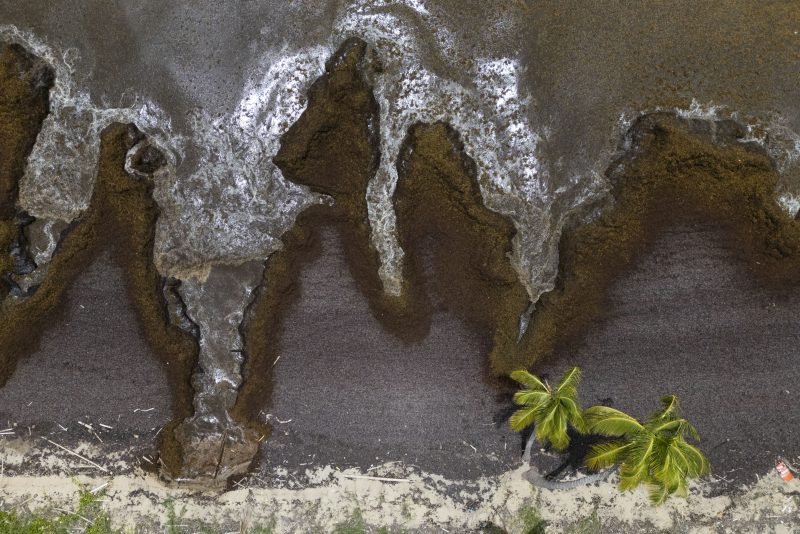
(NEXSTAR) – Blooms of of smelly, toxic seaweed shattered records in May, growing to over 37 million tons and inundating beaches around the Caribbean. If it’s not bad enough already, the amount of seaweed is expected to grow even more in June.
The University of South Florida’s Optical Oceanography Lab tracks the growth of this type of seaweed, called sargassum, closely. As the bloom exploded in the ocean last month, large masses of sargassum started washing up on most Caribbean islands and Mexico’s Caribbean coast. Smaller amounts also appeared in the Florida Keys, southeastern Florida beaches, the Mississippi delta and the Texas coast, the researchers said.
The already record-sized seaweed mass is expected to grow even bigger in June, bringing in more sargassum into the Caribbean Sea and closer to the Gulf coast.
“Sargassum inundation will continue to occur in most of the Caribbean nations and islands as well as along the southeast coast of Florida,” write the USF researchers. Exactly which beaches are going to be impacted is hard to predict, they say, due to wind and current patterns.
Most of the massive sargassum belt is still floating out in the central Atlantic Ocean, where it doesn’t pose too many problems.
The issues start when the seaweed washes ashore, rots and emits hydrogen sulfide. It smells like rotten eggs and can cause breathing problems for people with sensitivities.

“It is a challenge, but it’s certainly not affecting every single inch of the Caribbean,” said Frank Comito, special adviser to the Caribbean Hotel and Tourism Association.
In the popular tourist spot of Punta Cana in the Dominican Republic, officials have invested in barriers to prevent sargassum from reaching the shore, he said.
In the Dutch Caribbean territory of St. Maarten, crews with backhoes were dispatched in late May as part of an emergency clean-up after residents complained of strong smells of ammonia and hydrogen sulfide, which can affect a person’s respiratory system.
“The smell is quite terrible,” Barnes said.
Some Caribbean islands struggle financially, so most of the cleanup is done by hotels, with some offering guests refunds or a free shuttle to unaffected beaches.
The total mass of sargassum observed in the Caribbean Sea, western and eastern Atlantic and the Gulf of Mexico is about 37.5 million tons. The previous record was set in June 2022, with some 22 million metric tons.
The Associated Press contributed to this report.






